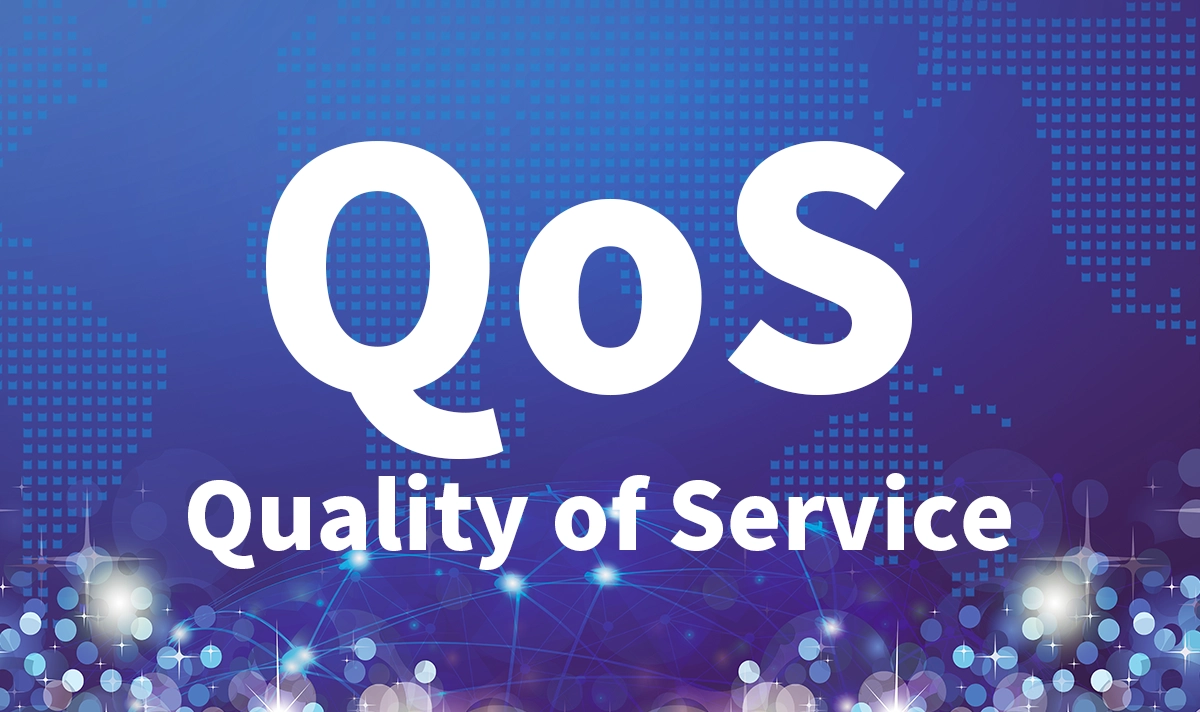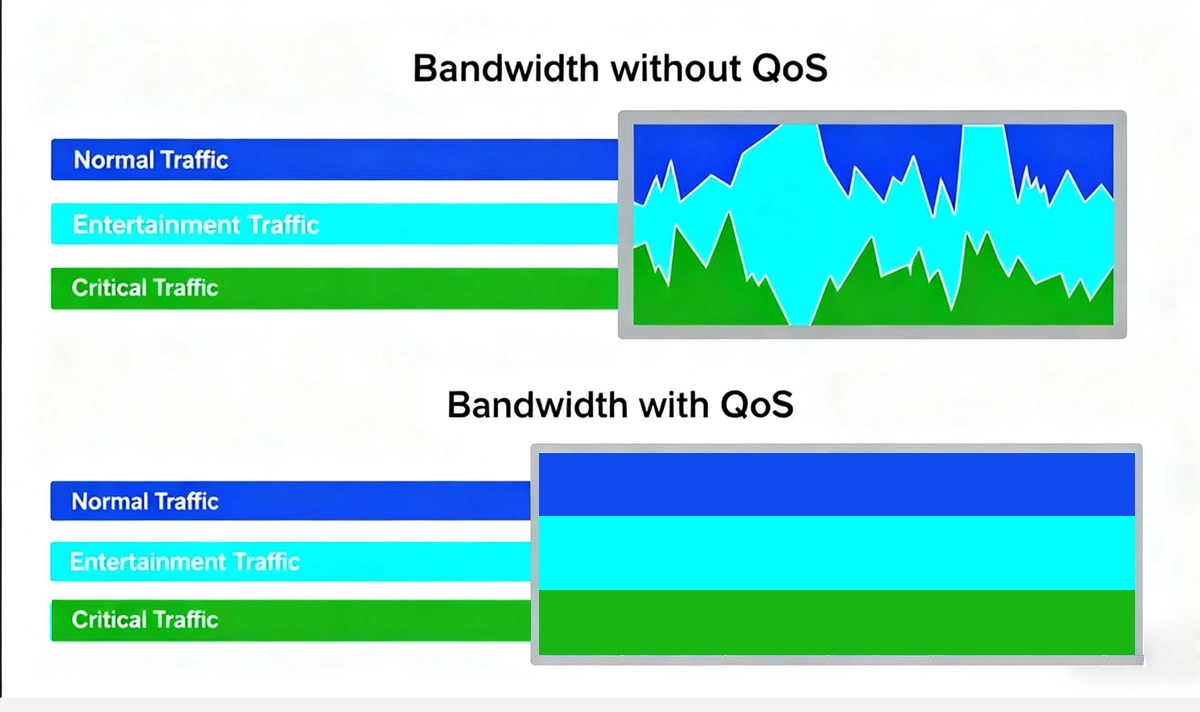
Quality of Service (QoS) is a foundational concept in modern IP networks, enabling predictable performance for latency-sensitive and mission-critical data flows. As enterprises adopt real-time applications—voice, video, industrial control, and distributed cloud services—QoS ensures stable throughput, reduced latency, and consistent user experience.
This article explains QoS with a practical engineering focus, covering definitions, mechanisms, deployment strategies, and hardware considerations. It also highlights how LINK-PP’s Integrated RJ45 Connectors strengthen QoS performance in switches, routers, edge devices, and industrial Ethernet systems.
🌐 What Is QoS?
Quality of Service (QoS) refers to a set of network technologies that classify, prioritize, and manage traffic to guarantee specific performance levels. Instead of best-effort transmission, QoS provides:
Prioritized delivery of essential traffic
Reduced latency for real-time applications
Lower jitter and stable timing
Minimized packet loss during congestion
QoS is especially important in converged networks where voice, video, data, and control signals share the same infrastructure.
🌐 Why QoS Matters in Modern Networks
Modern IP networks face increasing pressure from low-latency and high-bandwidth traffic. QoS is critical because:
Voice and video services require steady, low-jitter transmission.
Industrial Ethernet demands deterministic communication.
Cloud and edge applications rely on predictable throughput.
Mixed-service networks must meet strict SLA requirements.
QoS enables reliable operation even when the network is congested or multi-service traffic peaks.

🌐 How QoS Works: Core Mechanisms
A complete QoS design typically involves four main operational stages.
▷ Classification
Traffic is identified by examining applications, source/destination, protocol types, or header fields such as DSCP and ToS.
▷ Marking
Packets are tagged with priority values, including:
These markings guide forwarding behavior across the network.
▷ Queuing and Scheduling
Devices allocate bandwidth using algorithms such as:
Priority Queuing (real-time traffic first)
Weighted Fair Queuing
Class-Based Weighted Fair Queuing
Low-Latency Queuing
These techniques determine which packets transmit under load.
▷ Congestion Management
To avoid buffer overflow, networks apply:
RED / WRED for early packet drop
Traffic policing to enforce bandwidth limits
Traffic shaping to regulate bursty flows
Together, these mechanisms enforce service guarantees under heavy traffic conditions.
🌐 QoS Architectures
♦ Best-Effort
No guarantees; suitable for non-critical data.
♦ Integrated Services (IntServ)
Uses RSVP signaling and per-flow reservation; accurate but difficult to scale.
♦ Differentiated Services (DiffServ)
Industry-standard approach using class-based prioritization for scalable QoS.
♦ MPLS QoS
Applies label-based prioritization; essential in carrier and large enterprise networks.
🌐 Key Metrics for Evaluating QoS
Engineers assess QoS performance using:
Latency: time required for packet delivery
Jitter: variation in delay, crucial for voice and video streams
Packet Loss Rate: dropped packets that impact reliability
Throughput: actual available bandwidth
Availability: uptime of the end-to-end path
These metrics ensure networks can sustain real-time and business-critical operations.
🌐 Engineering Use Cases for QoS
1. Enterprise Communications
Unified Communications, wireless backhaul, and video conferencing.
2. Industrial Ethernet
Automation systems where timing, jitter, and packet loss directly affect productivity.
3. Data Centers and Cloud Infrastructure
Traffic segmentation, microservices, and congestion-sensitive workloads.
4. Carrier and Service Provider Networks
VoLTE, IPTV, MPLS transport, and multi-service delivery.
🌐 How Hardware Influences QoS Performance
Although QoS operates at Layers 2–4, physical-layer characteristics directly impact QoS results. Poor signal integrity, EMI issues, and unstable magnetics can introduce jitter and packet loss before QoS policies can act.
Key hardware factors affecting QoS include:
Transformer balance and isolation in RJ45 connectors
Insertion loss and return loss performance
BER stability under real-world load
PoE isolation performance in powered devices
These determine whether QoS mechanisms can maintain deterministic behavior.
LINK-PP provides high-reliability Integrated RJ45 Connectors (MagJack) designed for stable Ethernet links in enterprise, industrial, and embedded systems.

🌐 Conclusion
Quality of Service is a critical technology for maintaining predictable performance in modern IP networks. By prioritizing traffic and controlling congestion, QoS ensures that real-time and mission-critical services—voice, video, automation, and cloud workloads—operate consistently under load.
While QoS algorithms operate at higher layers, their success depends on the reliability of the physical interface. LINK-PP’s Integrated RJ45 Connectors deliver the signal integrity, EMI suppression, and long-term stability required to support QoS-sensitive networks across enterprise, industrial, and embedded environments.
LINK-PP continues to provide high-performance connectivity components that enable engineers to build networks with reliable, deterministic, and scalable QoS.


